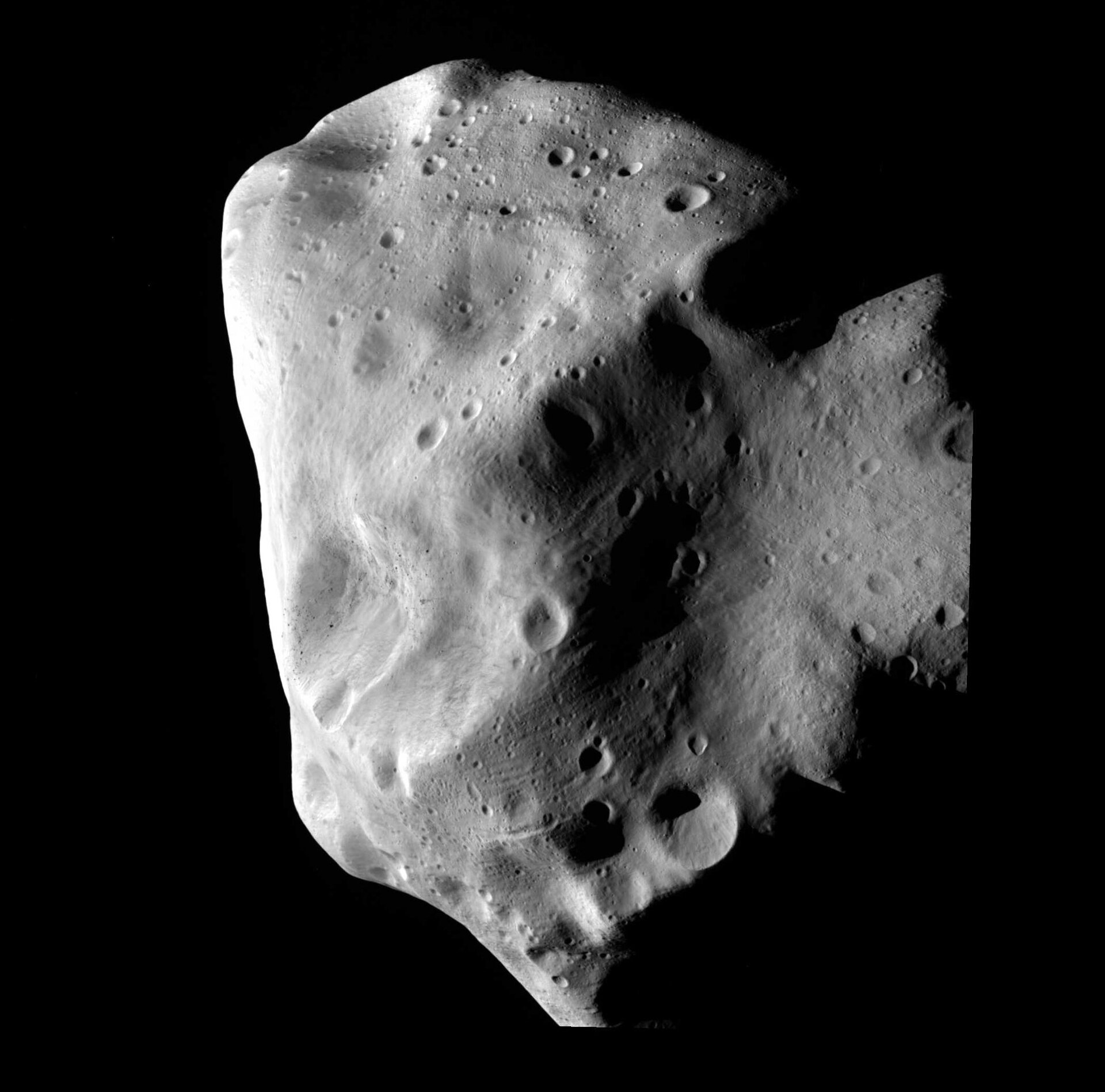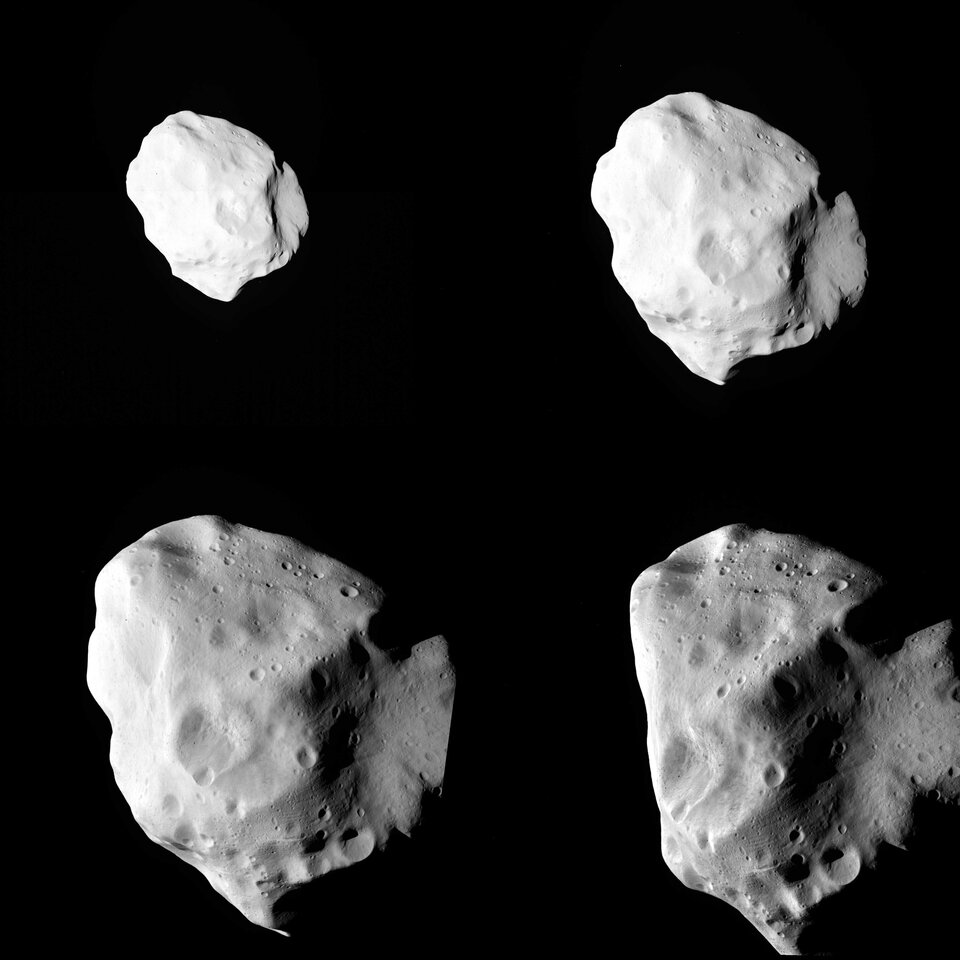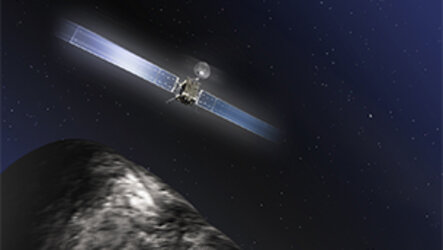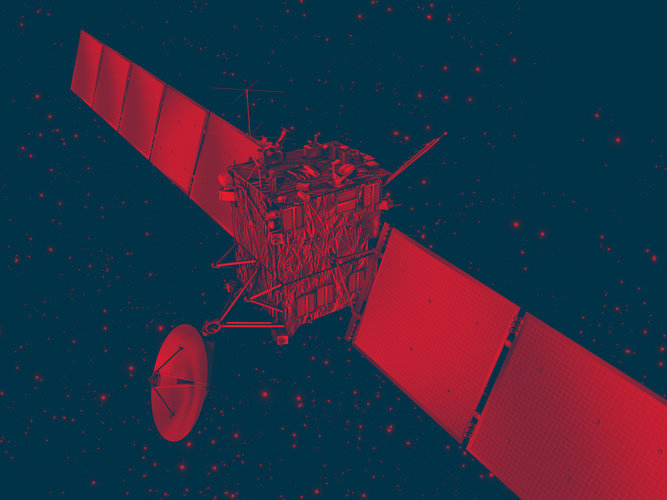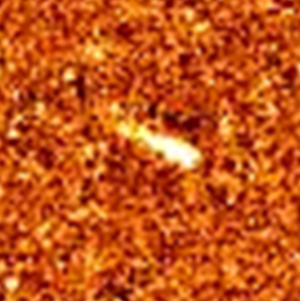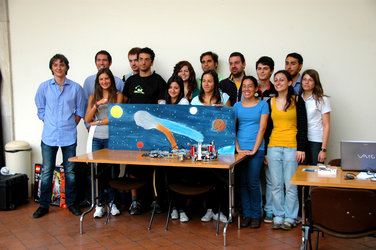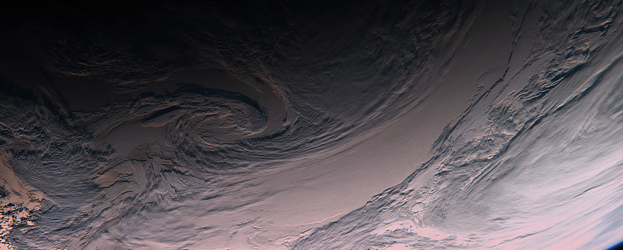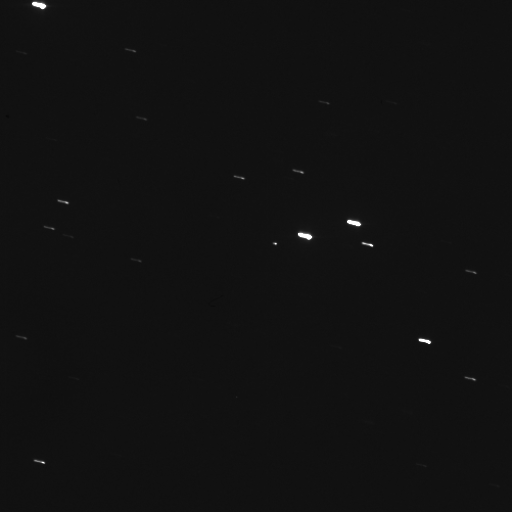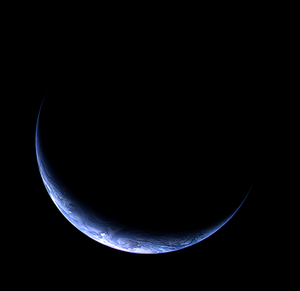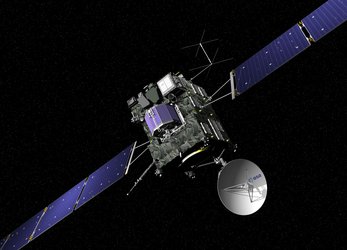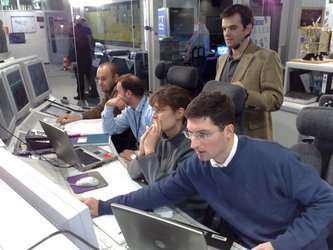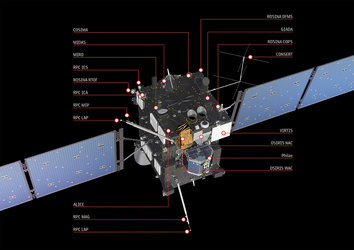Rosetta triumphs at asteroid Lutetia
Asteroid Lutetia has been revealed as a battered world of many craters. ESA’s Rosetta mission has returned the first close-up images of the asteroid showing it is most probably a primitive survivor from the violent birth of the Solar System.
The flyby was a spectacular success with Rosetta performing faultlessly. Closest approach took place at 18:10 CEST, at a distance of 3162 km.
The images show that Lutetia is heavily cratered, having suffered many impacts during its 4.5 billion years of existence. As Rosetta drew close, a giant bowl-shaped depression stretching across much of the asteroid rotated into view. The images confirm that Lutetia is an elongated body, with its longest side around 130km.
The pictures come from Rosetta’s OSIRIS instrument, which combines a wide angle and a narrow angle camera. At closest approach, details down to a scale of 60 m can be seen over the entire surface of Lutetia.
"I think this is a very old object. Tonight we have seen a remnant of the Solar System’s creation," says Holger Sierks, OSIRIS principal investigator, Max Planck Institute for Solar System Research, Lindau, Germany.
Racing past an asteroid
Rosetta raced past the asteroid at 15 km/s completing the flyby in just a minute. But the cameras and other instruments had been working for hours and in some cases days beforehand, and will continue afterwards. Shortly after closest approach, Rosetta began transmitting data to Earth for processing.

Lutetia has been a mystery for many years. Ground telescopes have shown that it presents confusing characteristics. In some respects it resembles a ‘C-type’ asteroid, a primitive body left over from the formation of the Solar System. In others, it looks like an ‘M-type’. These have been associated with iron meteorites, are usually reddish and thought to be fragments of the cores of much larger objects.
The new images and the data from Rosetta’s other instruments will help to decide but not tonight. Compositional information is needed for that.
Sensors investigate Lutetia
Rosetta operated a full suite of sensors at the encounter, including remote sensing and in-situ measurements. Some of the payload of its Philae lander were also switched on. Together they looked for evidence of a highly tenuous atmosphere, magnetic effects, and studied the surface composition as well as the asteroid’s density.

They also attempted to catch any dust grains that may have been floating in space near the asteroid for on-board analysis. The results from these instruments will come in time.
The flyby marks the attainment of one of Rosetta’s main scientific objectives. The spacecraft will now continue to a 2014 rendezvous with its primary target, comet Churyumov-Gerasimenko. It will then accompany the comet for months, from near the orbit of Jupiter down to its closest approach to the Sun. In November 2014, Rosetta will release Philae to land on the comet nucleus.

"Wunderbar!' says David Southwood, ESA Director of Science and Robotic Exploration, "It has been a great day for exploration, a great day for European science. The clockwork precision is a great tribute to the scientists and engineers in our Member States in our industry and, not least, in ESA itself. Roll on 2014 and our comet rendezvous." But for now, analysing the Lutetia data is the focus for the Rosetta instrument teams. Just 24 hours ago, Lutetia was a distant stranger. Now, thanks to Rosetta, it has become a close friend.















 Germany
Germany
 Austria
Austria
 Belgium
Belgium
 Denmark
Denmark
 Spain
Spain
 Estonia
Estonia
 Finland
Finland
 France
France
 Greece
Greece
 Hungary
Hungary
 Ireland
Ireland
 Italy
Italy
 Luxembourg
Luxembourg
 Norway
Norway
 The Netherlands
The Netherlands
 Poland
Poland
 Portugal
Portugal
 Czechia
Czechia
 Romania
Romania
 United Kingdom
United Kingdom
 Slovenia
Slovenia
 Sweden
Sweden
 Switzerland
Switzerland


























